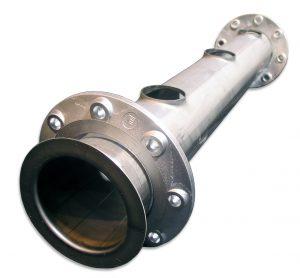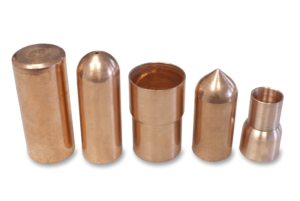Flanging eliminates the need for welding, since the flange is mounted loosely behind the formed end configuration!
ADVANTAGES WHEN USING T-DRILL FLANGING MACHINES:

T-DRILL Flanging Machines form a lip or flange directly on the end of the pipe allowing the use of loose flanges. This process saves up to 40 % of the time compared to traditional weld neck flange connections. The flange – also called the Van Stone and loose flange – is achieved by roll forming a flange on the end of the pipe spool. The flange can have a smooth or grooved face, depending on the forming (rolling) tool used.
A loose commercial flange backs up the formed pipe end; when the connection is made, a gasket is sandwiched between the two formed flanges, held together by the bolted commercial flanges. Since the flanges are loose, they eliminate welding and allow free rotation for alignment and bolt-up, providing so a significant cost reduction.
THE FLANGING CAN BE PERFORMED ON COLD OR HEATED PIPES:
Cold flanging is used for stainless steel, mild steel and copper alloys. The wall thickness of the pipe can be from 1,5 mm up to 5–6 mm depending on pipe material and diameter. In case stress relieving is needed, the machine can be equipped with optional heating unit which can be used for heat treatment after flange has been formed.
Hot flanging is used for carbon steels in case the wall thickness exceeds the cold forming limit or if heat treatment is found necessary. The pipe end is heated to about 900 – 950 ºC, in order to reduce the force required for the flanging. No further heat treatment after flanging is then necessary. The heating is done automatically by optional gas burner which can be integrated to the machine. The wall thickness of the pipe can be from 3 up to 8,8 mm depending on pipe diameter.
Preheated flange forming can be used for stainless steels. Before flanging the pipe end is preheated to 200 – 300º C, which prevents work-hardening of the material during flanging. Preheating may be done by means of a heating unit which can be integrated to the machine or by heating the pipe by another method before flanging operation. The wall thickness of the pipe can be from 1,5 up to 5 mm.
Most commonly used in:

ADVANTAGES WHEN USING
T-DRILL TUBE END SPINNERS:
T-DRILL Tube End Spinners are designed to accept the requirements of a wide range of applications – including the end forming of exceptionally long or complicated tubes common in e.g. ACR, solar panels and mechanical contracting industries.
The T-DRILL Spinning Machines are fully automatic and suitable for closing, reducing and expanding of copper and brass tubes. The form of the closing can be elliptical (short closing) or spherical (round closing). Reductions and Expansions are also possible up to certain sizes.
The principle is as follows: After the tube has been clamped, a rotating die will be fed automatically against the tube end. The friction of the rotating die heats up the end of the stationary tube, forming it rapidly to the shape of the die.
Most commonly used in:
More information about different technologies:
Share on social media